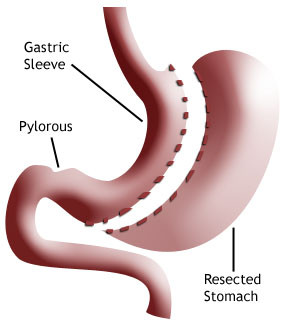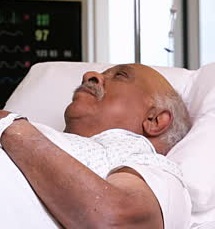Angioplasty is a medical technique used to widen the narrowed arteries or obstructed arteries, mechanically. The obstructed arteries are usually resulted from atherosclerosis. During the procedure, the arteries those are obstructed or narrowed are passed by a balloon, which is an empty one. The balloon is then collapsed on the guide wire. This balloon is called balloon catheter. After the balloons are passed to the right location, water pressure is applied in order to inflate the balloons. The pressure of water ranges from 75 to 500 times that of the normal pressure or equivalent to 6 to 20 atmospheres. This balloon functions in such a way that it expands the clot plaque deposit or inner white blood cell, thereby expanding muscular wall surrounding the area. Resultantly, the blood vessel will be improved in its flow. After ensuring that the artery is widened enough, then balloon will be withdrawn, after deflating it. The vessel then has to be remained open. So, in certain and suitable conditions, stents are inserted right when the balloon is inserted.
There are different kinds of interventional procedures applied during the surgical procedure for the angioplasty.
Balloon Angioplasty
A small catheter along with tip of small balloon is passed to the narrowed or blocked artery and guided through. after placing it to the right point, the balloon will be inflated to stretch the wall and so that the artery will be widened to increase the flow of the blood.
Stent
A stent is mesh tube made up of a metal. It acts as a support as a scaffold inside the coronary artery. It needs balloon catheter that is placed on guide wire and helps inserting the stent into the coronary artery that is narrowed. After reaching to the point, the tip of the balloon is inflated and it makes the stent to expand to the required size for the artery and keeps holding it to open. Later, the balloon is deflated to get removed and the stent would be remained in its place permanently. Some of the stents are also designed to contain some medicine that help reducing the reblockage risk of the artery.
Rotablation
Rotablation is a special catheter with a diamond coated tip and acorn shaped. It is guided to the right point of the artery. Then the tip starts spinning around with a high speed to grind away any of the existing plaque present in the walls of artery. The ground microscopic particles are drained towards the liver and spleen through the blood stream. The same process is repeated to improve the flow of blood.
Antherectomy
Antherectomy also uses the catheter with hollow cylinder present on the tip. It consists of a balloon on one side and an open window on the other side. Catheter is placed at the right point of artery and the balloon is inflated, so that the window is pushed against the plaque. A cutter present in the cylinder shaves the plaque present there by rotating and then protruded. The shavings are then collected in the chamber inside the catheter and will be removed later.
After the Angioplasty Procedure
Patient has to stay in the hospital at least for the overnight to ensure that there are no complications. Blood pressure and heart rate of the patient is continuously monitored and the catheter site is also thoroughly checked against swelling or bleeding as well. Mediation is given to the patient in such cases, so that the arteries will be well protected against spasms. If the stents are inserted in the arteries, medicine is prescribed to prevent the clots in the blood and should be continued for at least one month, following the surgery. Depending on the medical condition, these medicines are prolonged even to one year. After the surgery, patients will be able to walk from 2 to 6 hours of time. If there are no complications are to be seen, the patient will be sent home then.
After the surgical procedure is performed if the patient is experienced with pain at the site of insertion, bleeding at the site of insertion, feel very weak, faint, develop fever, changes found in color in leg or arm, changes in temperature, chest pain or chest pain, should immediately seek for the advice.
Recovery After Angioplasty
After the surgery, if there are no complications, patient will be sent home in the next few days. And the patient has to be careful for the next one week. Later, normal routines can be started after a week’s time. However, hard physical activities are to be avoided for a months. So, lifting, sport activities and other strenuous physical activities are to be avoided to be done after the surgery.
Cost of Coronary Angioplasty
- Coronary Angiography – US $ 600
- Coronary Angioplasty (One Stent) – $7000 US Dollars
- Coronary Angioplasty (Two Stent) – $10000 US Dollars
The above Package Cost is a tentative Approximate Package Estimate, which includes initial investigations & specialists screening, stay in a Private Room wherein patient’s assistant or relative can also stay with patient, doctor / surgeon fee, nursing care, medicines & consumables, Airport Pick-Up & Drop.
In order to access, exact estimate of treatment package cost, do email us at [email protected] all your medical reports.
On receiving your medical reports, we will revert to you within 24 Hours with right estimate package after getting your medical reports examined by best team of doctors at best hospitals in India. We will also assist you in traveling part, which includes, airfare booking, medical visa invitation, airport pick-up and drop, hotel stay & visit for any sightseeing. With our 10 years of expertise in delivering highly caring International Patients Assistance Services, you can completely rely on us in every step of your recovery. Our all International Patient Assistance Services are absolutely FREE!!! as World Health Expert India (WHXI) is an official associate of India’s Best Hospitals & Specialists.


















 Jake, Male, 55, UK
Jake, Male, 55, UK
 Sulaiman, Male, 68, Africa
Sulaiman, Male, 68, Africa
 Azizi, Male, 44, Swahill, East Africa
Azizi, Male, 44, Swahill, East Africa
 Abam, 27, Female, Ghana
Abam, 27, Female, Ghana
 Fazah, 60, Male, Africa
Fazah, 60, Male, Africa
 George, 48 years, Male, UK
George, 48 years, Male, UK
 Jacob, 58 years, Male, US
Jacob, 58 years, Male, US
 Halisi, 40 years, Female, Kenya
Halisi, 40 years, Female, Kenya
 Saarah, 56 years, female, UK
Saarah, 56 years, female, UK
 Adhra, 35 years, female, Tanzania
Adhra, 35 years, female, Tanzania
